Studio’s start
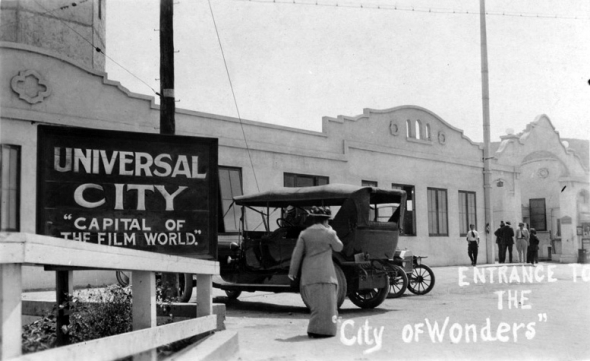
Since 1912 – the era of real nickelodeons – Universal Studios had been a hallmark of Hollywood and one of the first major players in the emerging motion picture business. And in 1915, founder Carl Laemmle opened Universal’s studio backlot to guests, who migrated to the emerging “Tinseltown” to get a behind-the-scenes look at movemaking.
The development of sound pictures – “talkies” – forced Laemmle to close his sets to onlookers, but when Disneyland reignited the Southern California tourist industry in the 1950s, Universal followed suit. In 1964, Universal Studios Hollywood reopened to the public as a tourist attraction and “theme park” proper, now touting its fabled Studio Tram Tour through real Hollywood sets and the sought-after behind-the-scenes world of the movies… and through staged encounters with Jaws, King Kong, an Earthquake, and more.
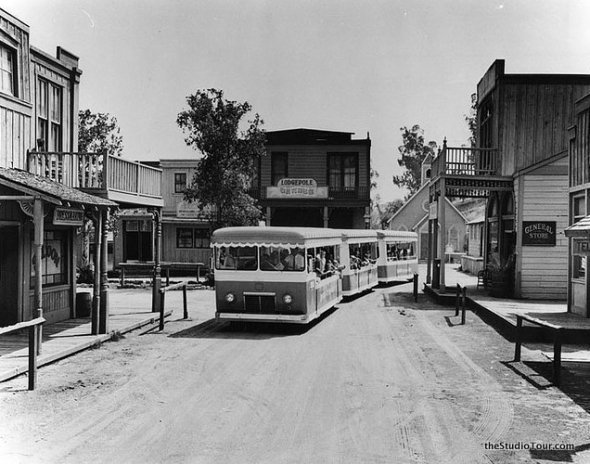
Following in the footsteps of Walt Disney World, Universal turned its attention to Orlando in the ‘80s, plotting how best to build in Disney’s shadow. Naturally, the gutsy idea of taking on Disney in its own backyard would require a coup. Once Universal decided that it had the anchor attraction it needed to best Disney (the Lost Legend: Back to the Future – The Ride), plans for Universal Studios Florida officially moved forward. There was just one problem…
Michael Eisner – newly minted CEO of Disney – heard about Universal’s plans for a movie park in Orlando and retaliated. He used his own cinematic resume (as former CEO of Paramount Pictures) and Disney’s regulatory oversight in Orlando to fast-track a movie park of his own: the Disney-MGM Studios. Not only did Disney dare build a studio-themed park itself, but the heart of this Floridian studio would be the Declassified Disaster: The Backstage Studio Tour.

Given that the studio tour had been the bread-and-butter of Universal’s original Hollywood park, critics assumed that they’d cancel their plans for an Orlando studio, effectively bowing to Disney’s preemptive strike. Instead, Universal doubled down on the concept, deciding to separate out the elements of its West Coast studio tour into standalone, E-Ticket attractions: the Lost Legends: JAWS, Kongfrontation, and Earthquake.
Now, both Disney and Universal were committed to building “studio” themed parks in Central Florida… and together, they were determined that Orlando would become a “Hollywood East” – a favorite filming location for productions the world over. Both parks were built with all the infrastructure a studio would need, including massive soundstages and production facilities. And best of all, guests at Disney and Universal would reap the benefits, touring through those facilities to see real, actual movie magic right before their eyes.
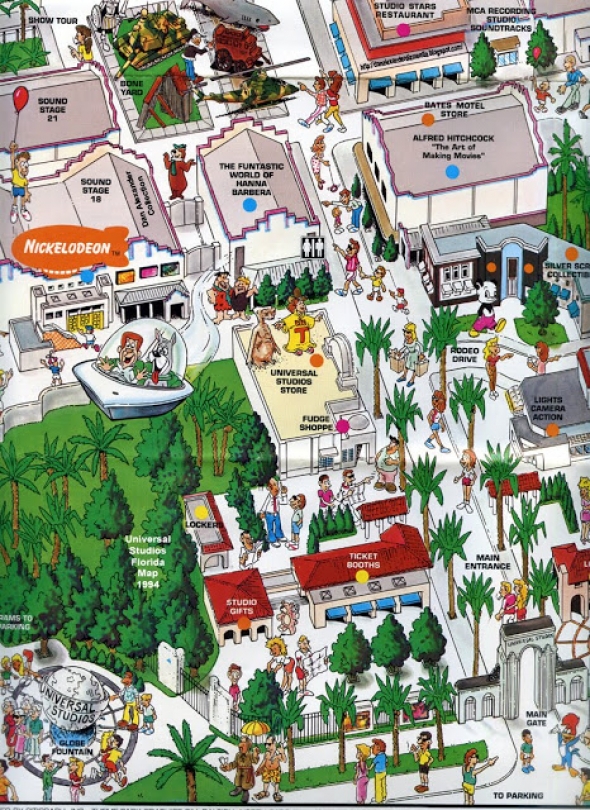
It was a win-win.
Universal would provide Nickelodeon with the real production space it needed; in return, Universal’s gutsy Orlando endeavor would open with a trusted family brand to rival Disney’s dominance.
Nick would set up production on Soundstages 18 and 19, with 17 reserved for production offices, dressing rooms, and makeup rooms. It’s there that Nickelodeon would set up sets to a whole new host of game shows, variety shows, and audience-participation shows that would come online in the first half of the ’90s; shows we guaruntee most Millennials will remember. So let’s start our trip down memory lane…
“Slime” capsule
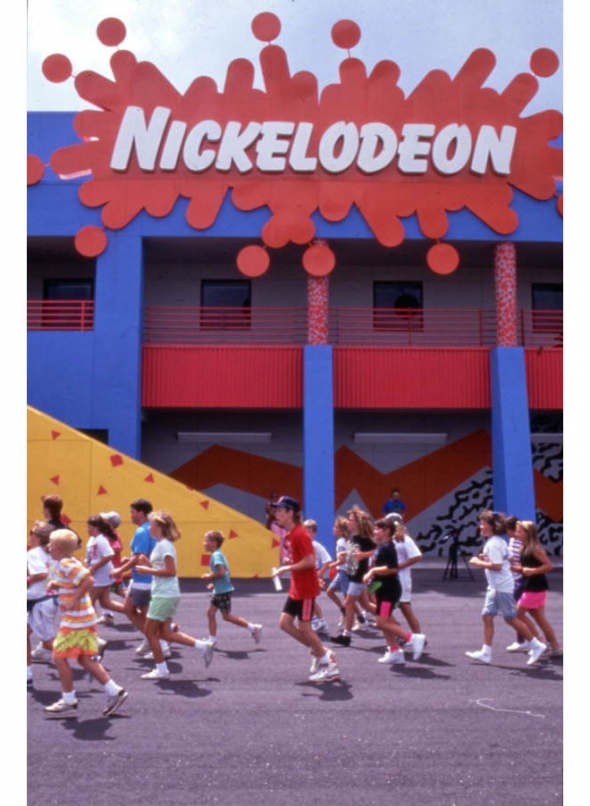
Nickelodeon Studios opened alongside Universal Studios Florida on June 7, 1990 with a special live broadcast party hosted by Marc Summers – host of Double Dare. The celebration included an army of kids dressed in ’90s neon garb racing from the Universal globe to the new Slime Geyser outside the studio for its inaugural eruption of neon green sludge.
In 1991, Nickelodeon debuted three original programs – Rugrats, Doug, and Ren & Stimpy – that further catapulted their brand into superstardom, turning the Orlando attraction into a destination.
But to really set the stage, let’s jump forward two years. On April 30, 1992, the official Nickelodeon time capsule was buried at Nickelodeon Studios. The items selected for preservation within were decided by call-in votes, and they may be the perfect way to set the stage for the glorious ’90s nostalgia that we’re about to step into. The Time Capsule contained:
- A Game Boy. No, not Advance. Not Color. An original 1992 Game Boy
- A pair of Reebok Pump sneakers and a pair of rollerbaldes
- A Barbie doll
- Filmed news reports of coverage of the AIDS crisis, Desert Storm, and the fall of the Soviet Union
- A box of Twinkies
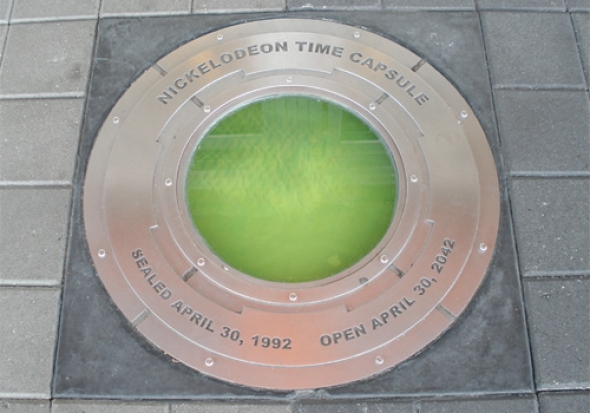
- VHS copies of Home Alone and Back to the Future
- A piece of the Berlin Wall
- Two music CDs: MC Hammer’s Please Hammer, Don’t Hurt ‘Em and Michael Jackson’s Dangerous
- A Ren & Stimpy t-shirt
- An Orlando phone book and TV Guide for the week of April 30, 1992
- Pencils, a baseball, photos of politicians and celebrities, bubble gum, and more…
Do you feel the ’90s coursing through your veins? Good. Then it’s time to step inside. On the next page, we’ll tour Nickelodeon Studios to see how some of our favorite unforgettable Nick shows were made. Ready?


